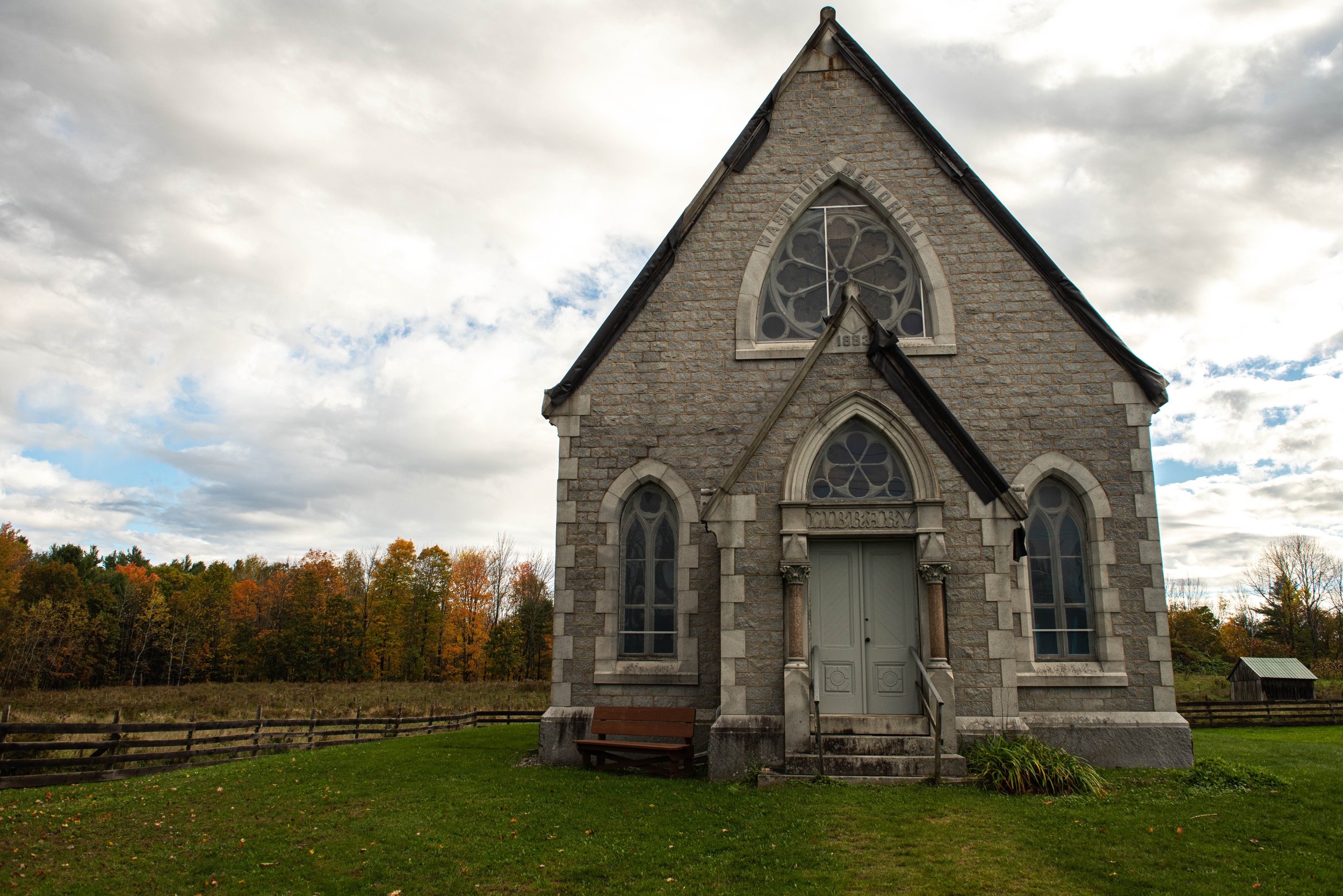
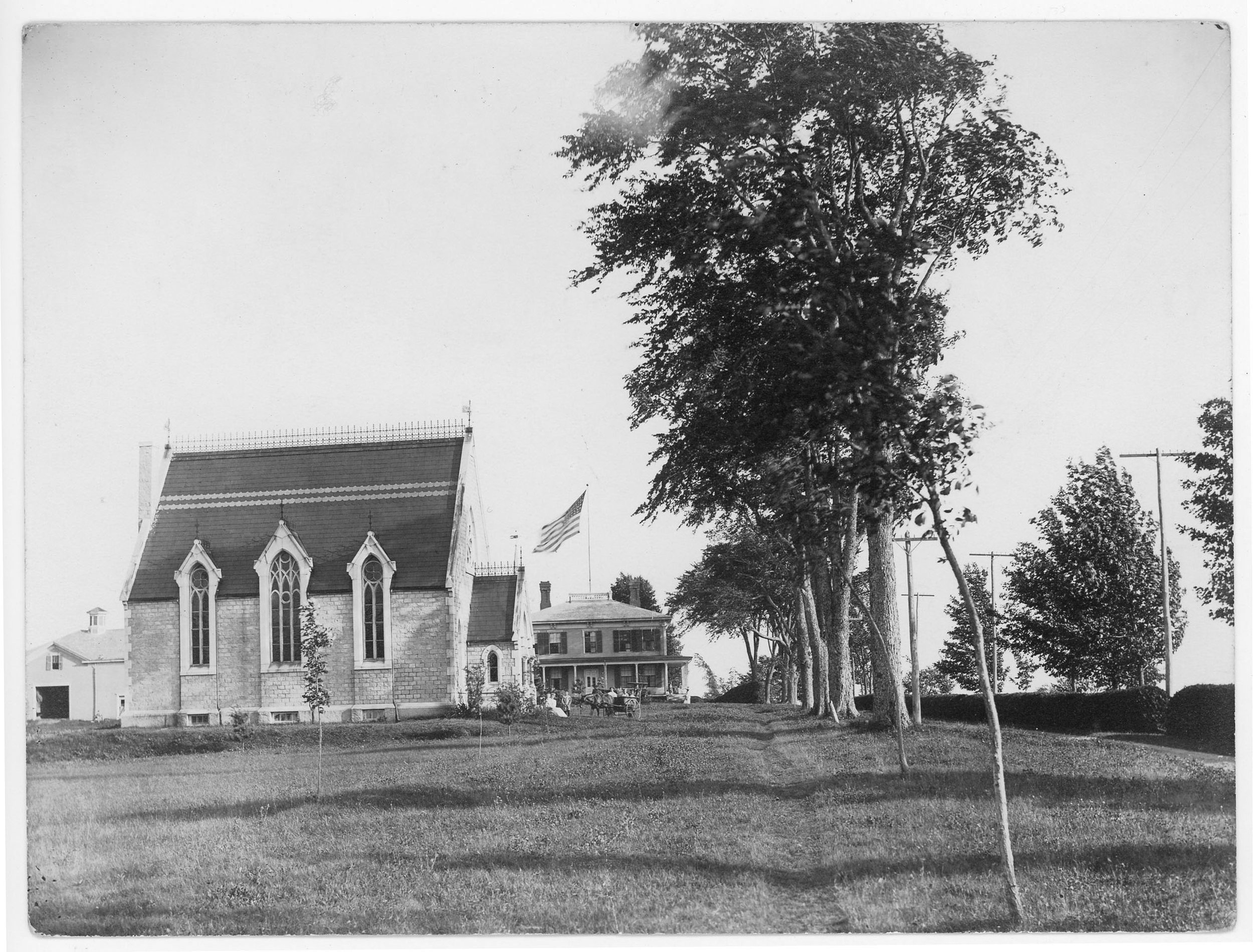
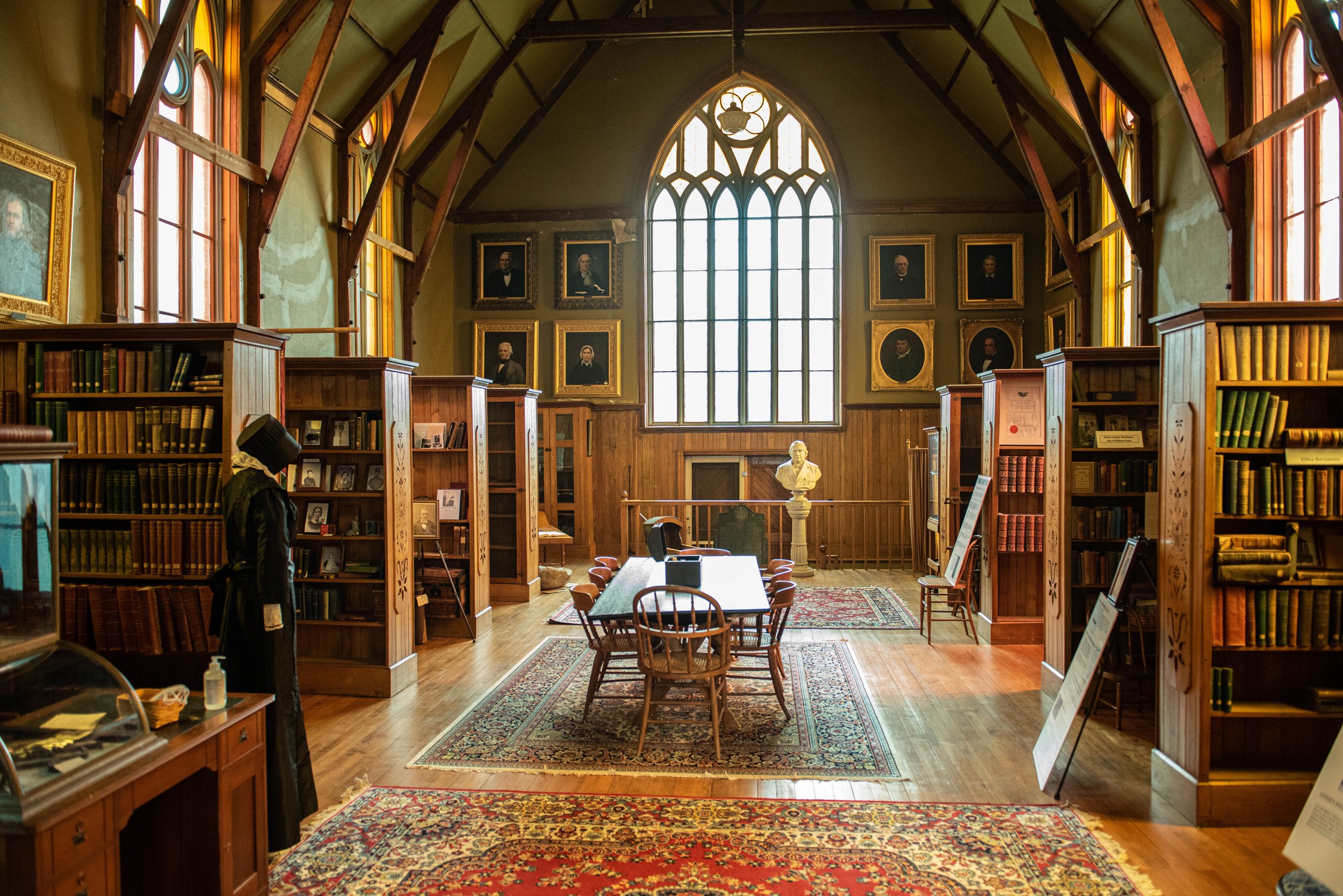
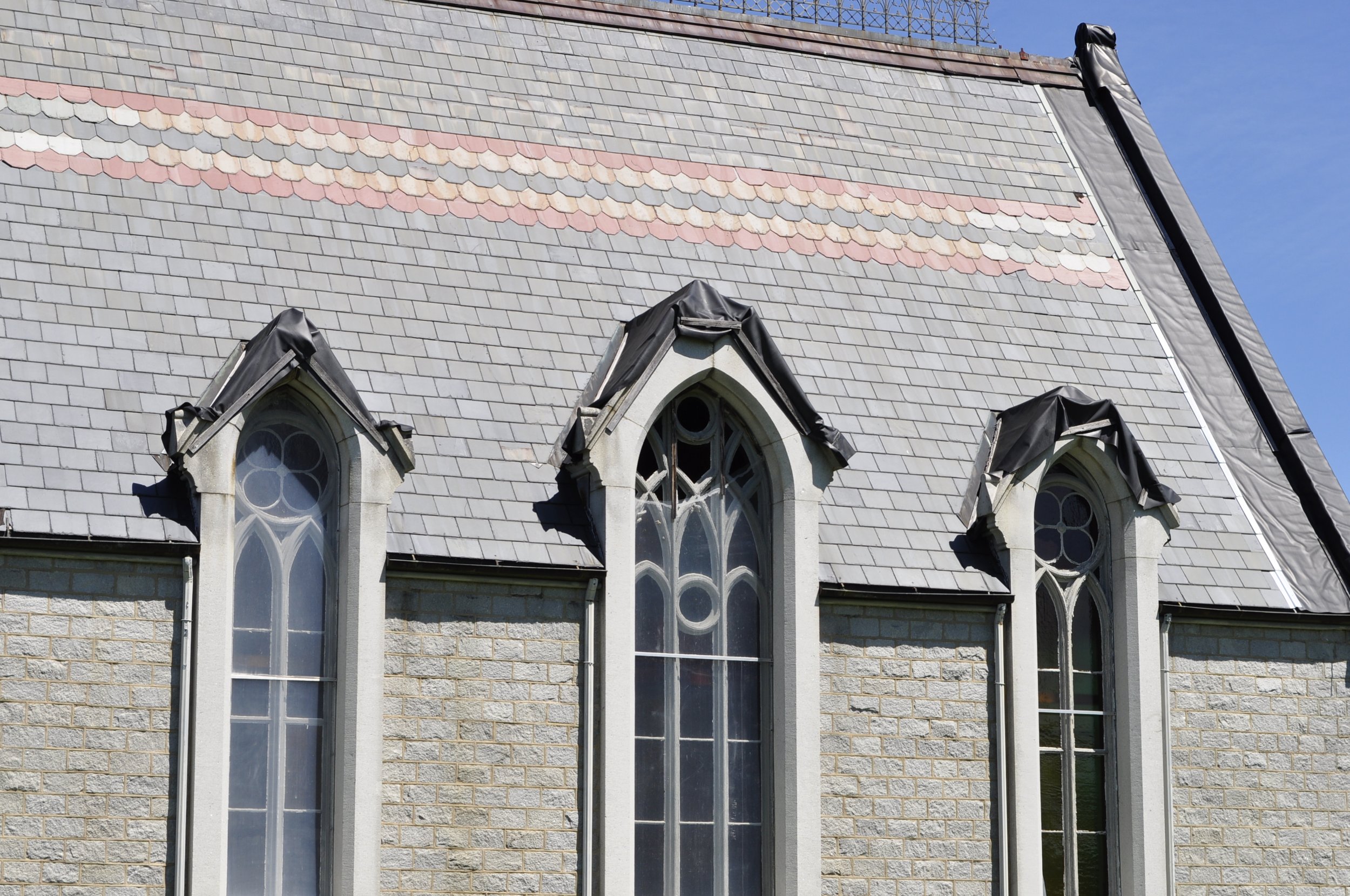
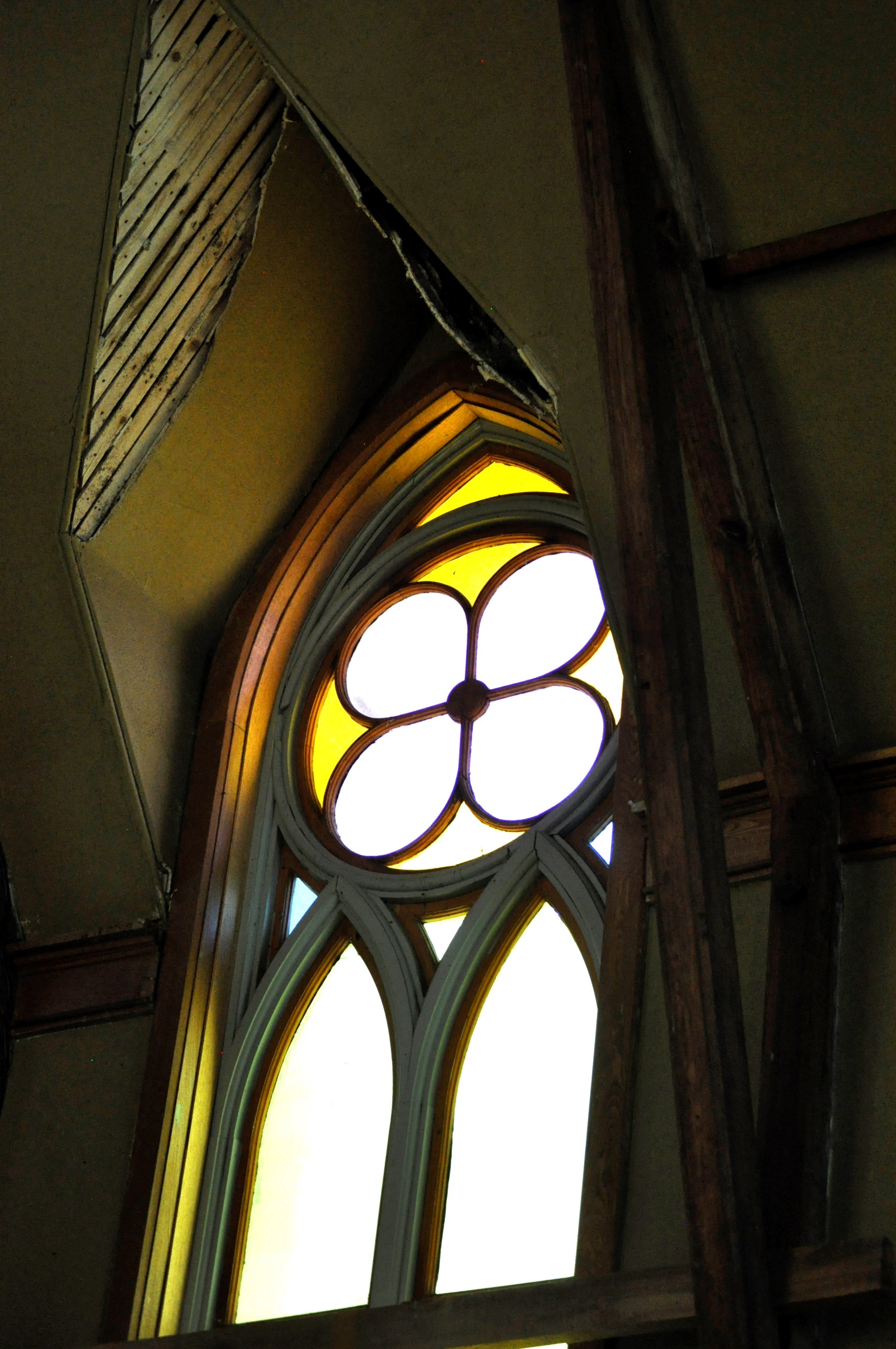
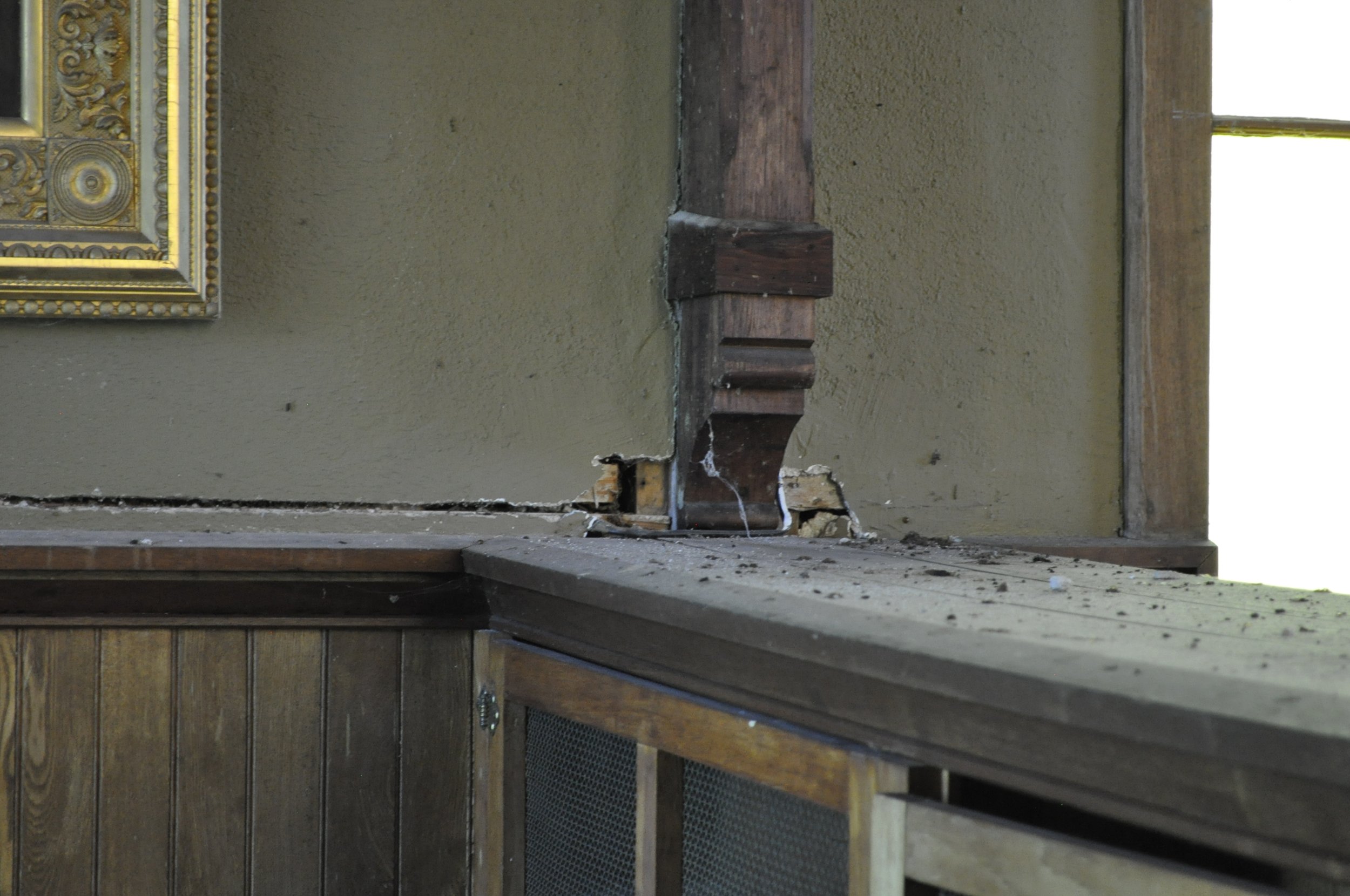
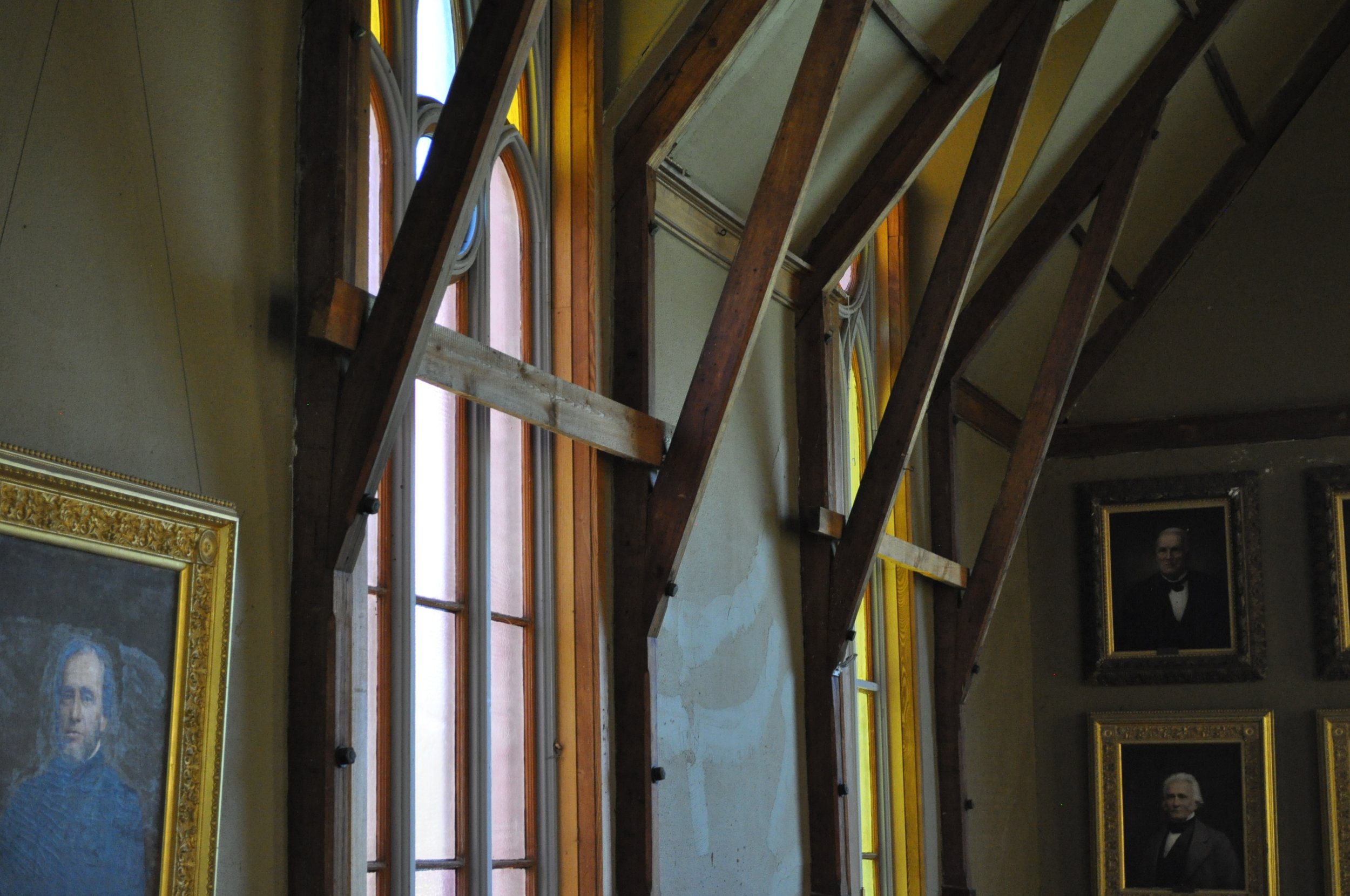
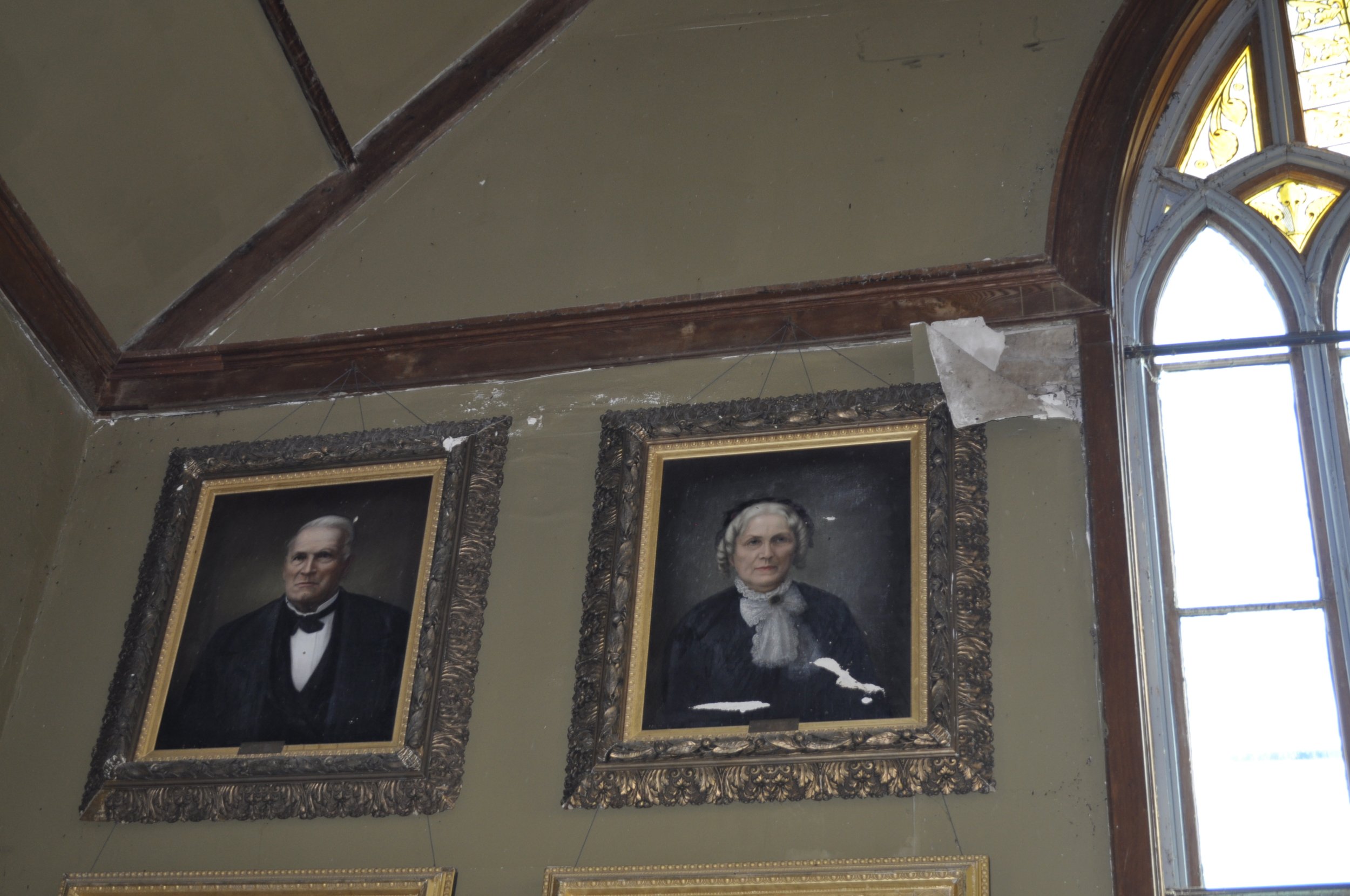
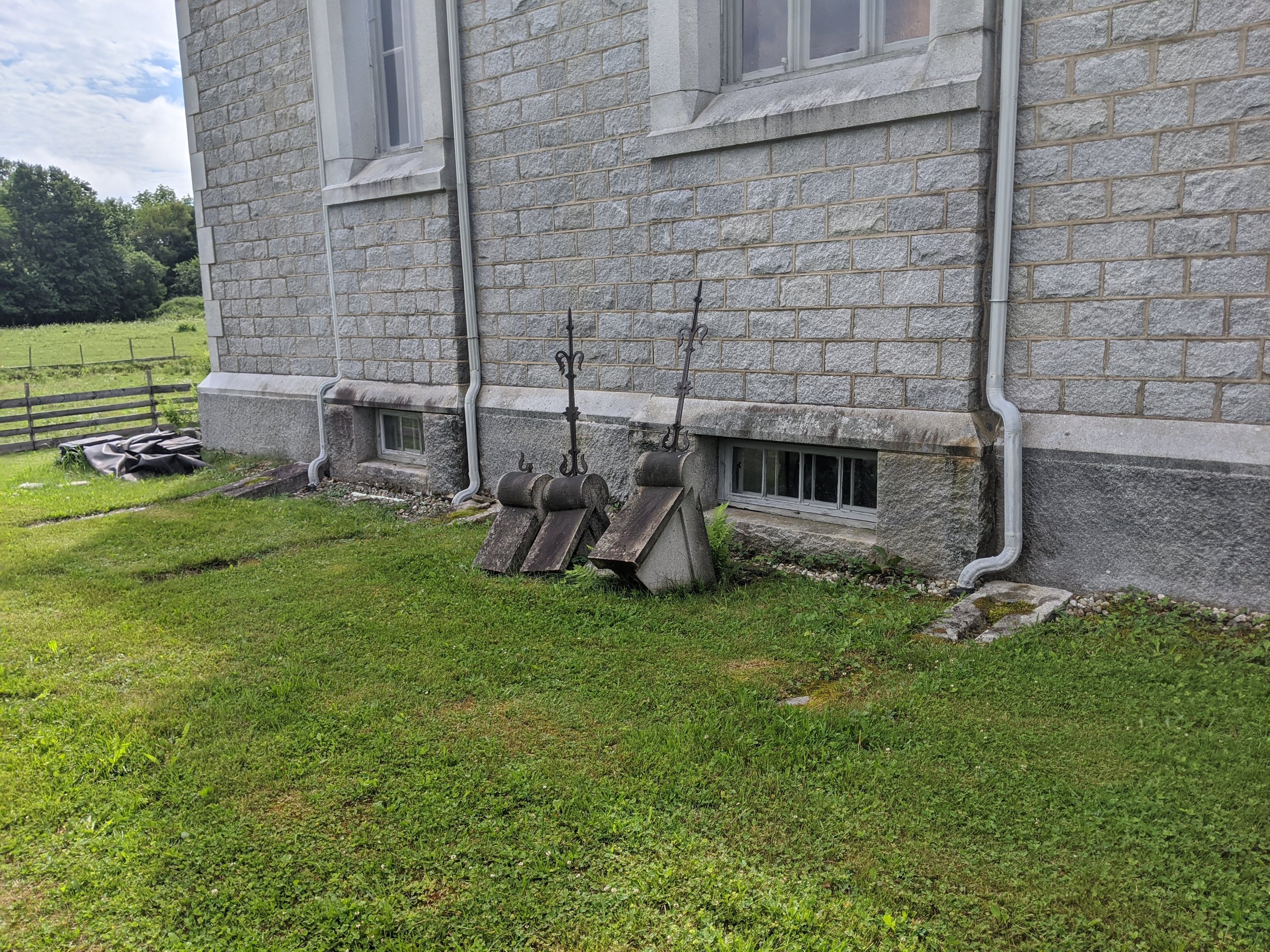
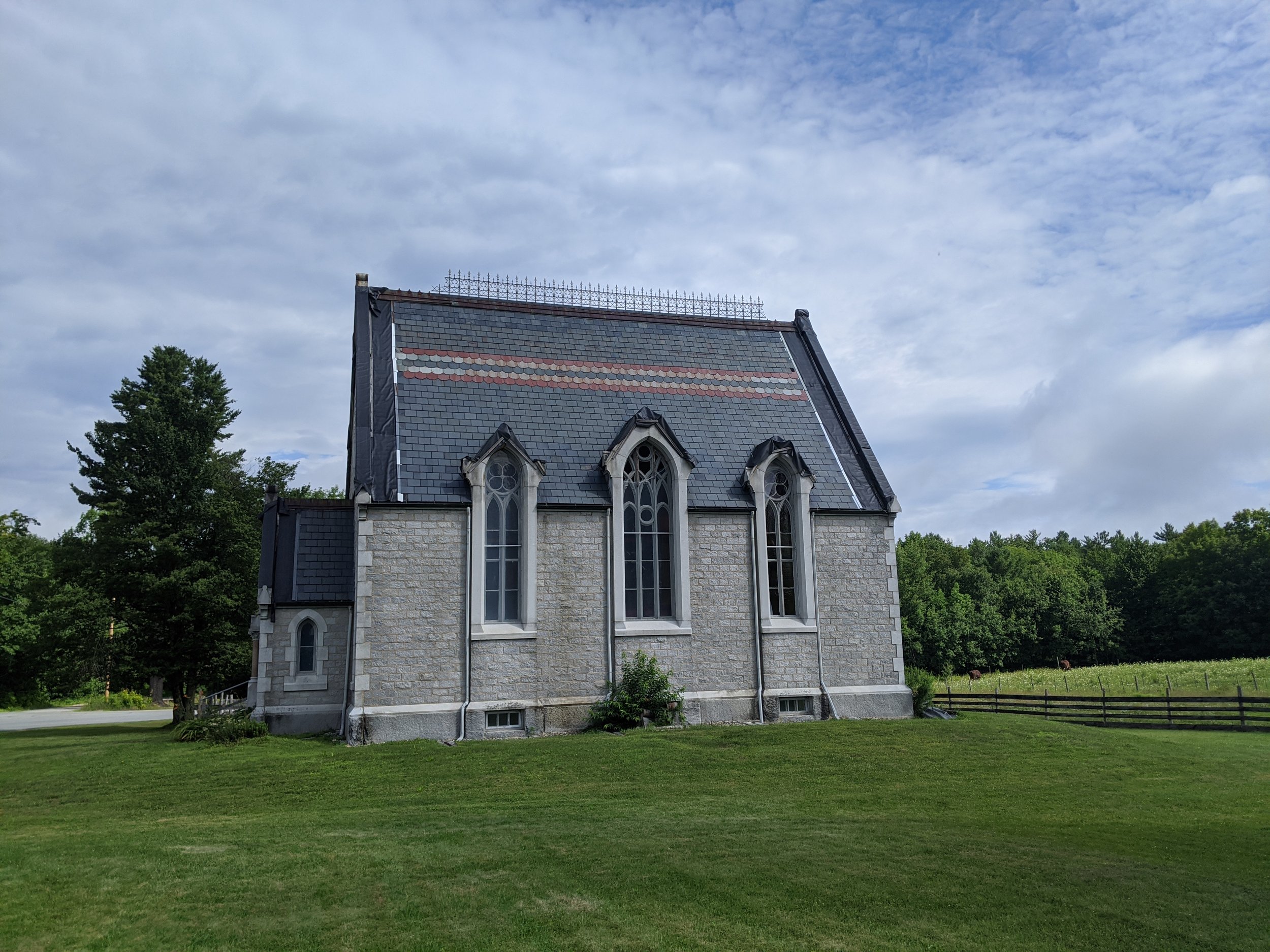


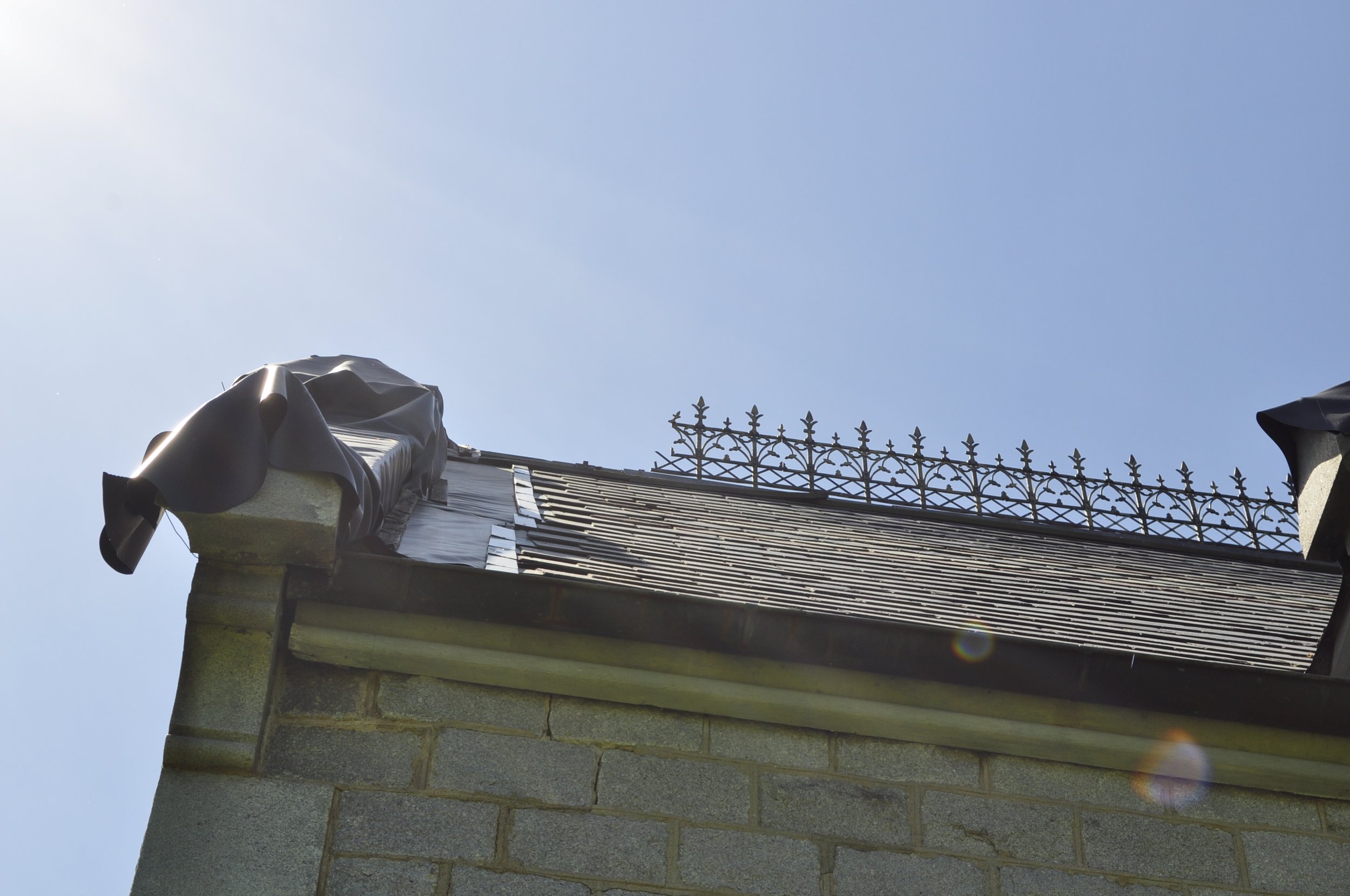
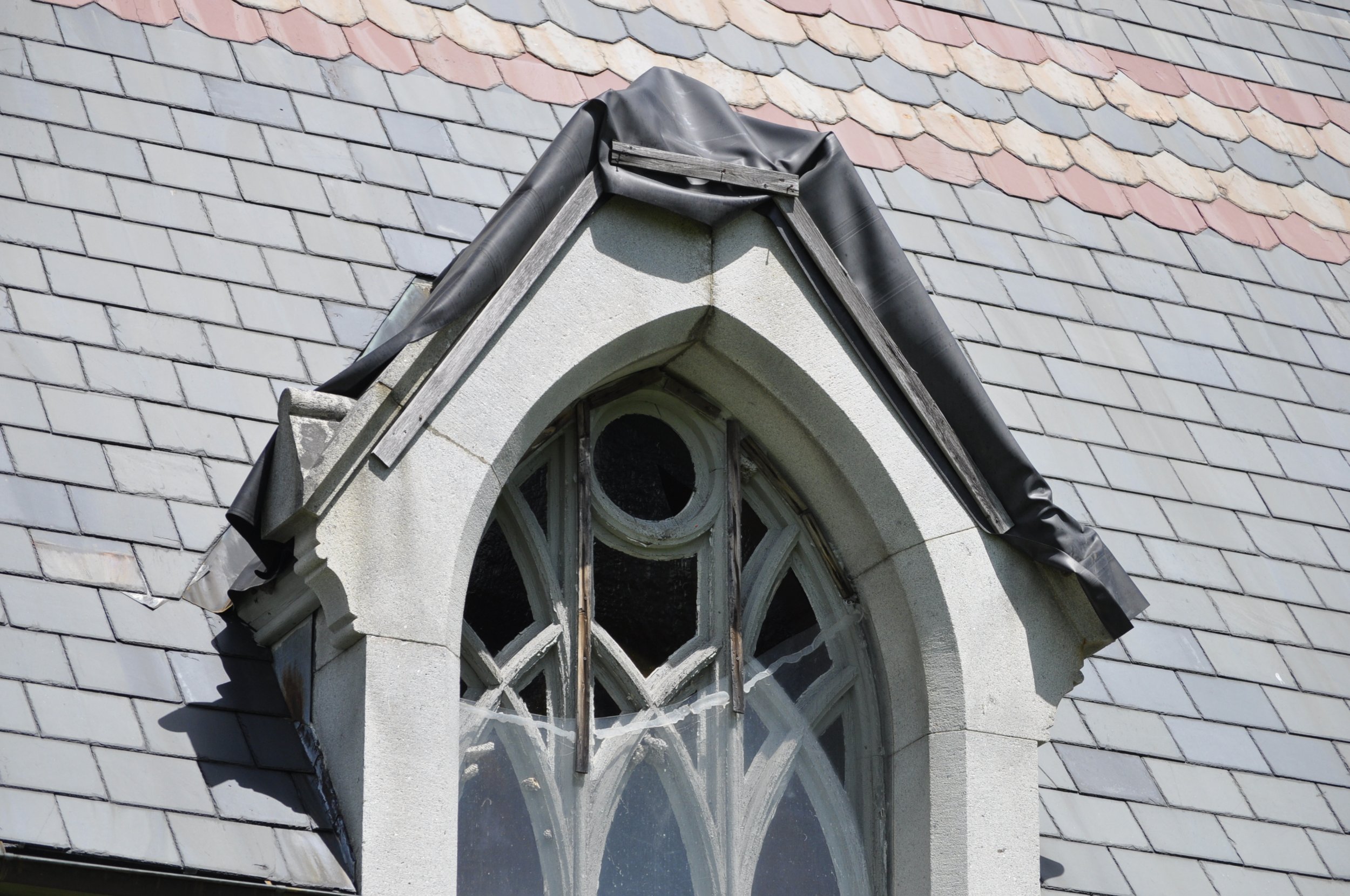
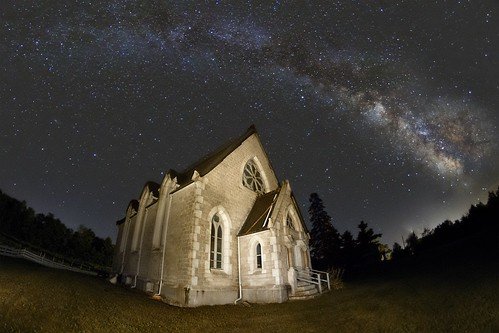
Story
The Washburn Memorial Library was built in 1883 and executed using the same architectural plans as the original section of the Hubbard Free Library in Hallowell, except the main floor is four feet longer. Deceivingly, traditional wood framing comprises the building’s structure while 6-inch granite ashlar from North Jay, Maine, clads its exterior. Architect Alexander Currier is credited with the Gothic Revival-style design, intended to emulate a church building. Governor Israel Washburn, Jr. was inspired to build and dedicate the library to honor his father, Israel Sr., and mother, Patty. Shortly after completion, Governor Washburn presented it to the Livermore community as a public lending library in 1886.
The Washburn Memorial Library is now part of the Norlands Living History Center, a living history museum centered around the family’s 1867 farmstead as well as an 1828 meetinghouse and 1853 schoolhouse. The building also houses the Washburn Library Archive, which contains a myriad of first-hand accounts of roughly 100 years of life at Norlands and its surrounding community. In addition, the archival collection includes correspondence, diaries, photographs, and enlistment and town records. Among the papers are exchanges between major political figures and members of the Washburn family, as well as intimate personal letters dating from the Civil War era.
Threat
Limited yet continuous movement of the library’s internal trusses have raised the alarm for Norlands’ leadership. An engineer’s report suggests that as the trusses pull apart under the weight of the Monson slate roof, they push the exterior walls outward, compromising sections of the exterior granite walls. As a result, there are multiple locations around the 140-year-old library where mortar joints are widening, permitting water infiltration. This influx of water damages the interior plaster walls, and in periods of freeze and thaw, damages the granite wall structure. The compromised building envelope also means that the decorative woodwork, archival documents, and museum objects inside are all in jeopardy. The widening and newly formed gaps caused by the shifting structure have also allowed for a colony of bats to move in. The library’s compounding problems have severely restricted its use as a space for programming and research and are great cause for concern for not only the building but also its vast collection of local history stored inside.
How to Get Involved
The Norlands Living History Center is undertaking a targeted capital fundraising campaign this year to raise $250,000 to initiate priority stabilization and restoration of the Washburn Memorial Library. The Washburn Legacy Library Campaign builds off the momentum of a generous donation from a Washburn descendant in 2020, which allowed for the complete renovation of the climate-controlled archive in the library’s basement. Priority will be given to stabilizing the roof trusses, resetting the exterior masonry walls and repointing the mortar joints to remedy the worst of gaps, and assessing how to best stabilize the walls to prevent any damage to the large stained-glass windows.
Among the challenges faced at Norlands is the uncertainty of identifying qualified tradespeople and securing a commitment for work to begin because of long waitlists and unstable material prices. Maine Preservation will be assisting the organization to overcome some of these challenges, while the greatest focus remains on raising the funds needed to make the priority stabilization and restoration possible.
Visit the Washburn Legacy Library Campaign website to learn more about the building and how you can contribute.

